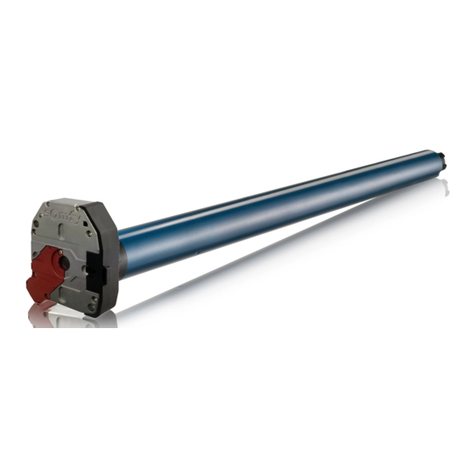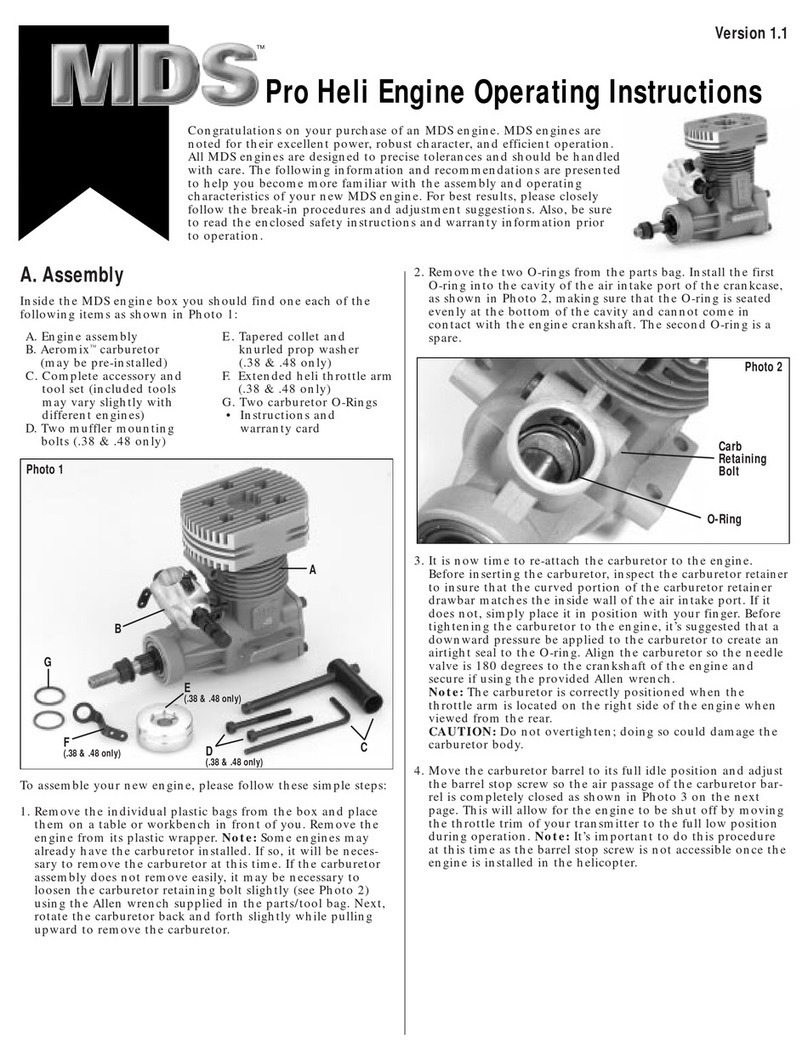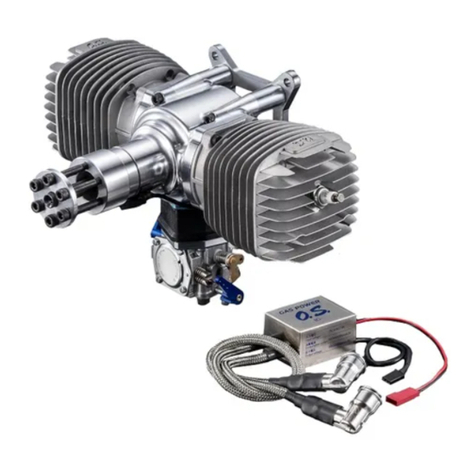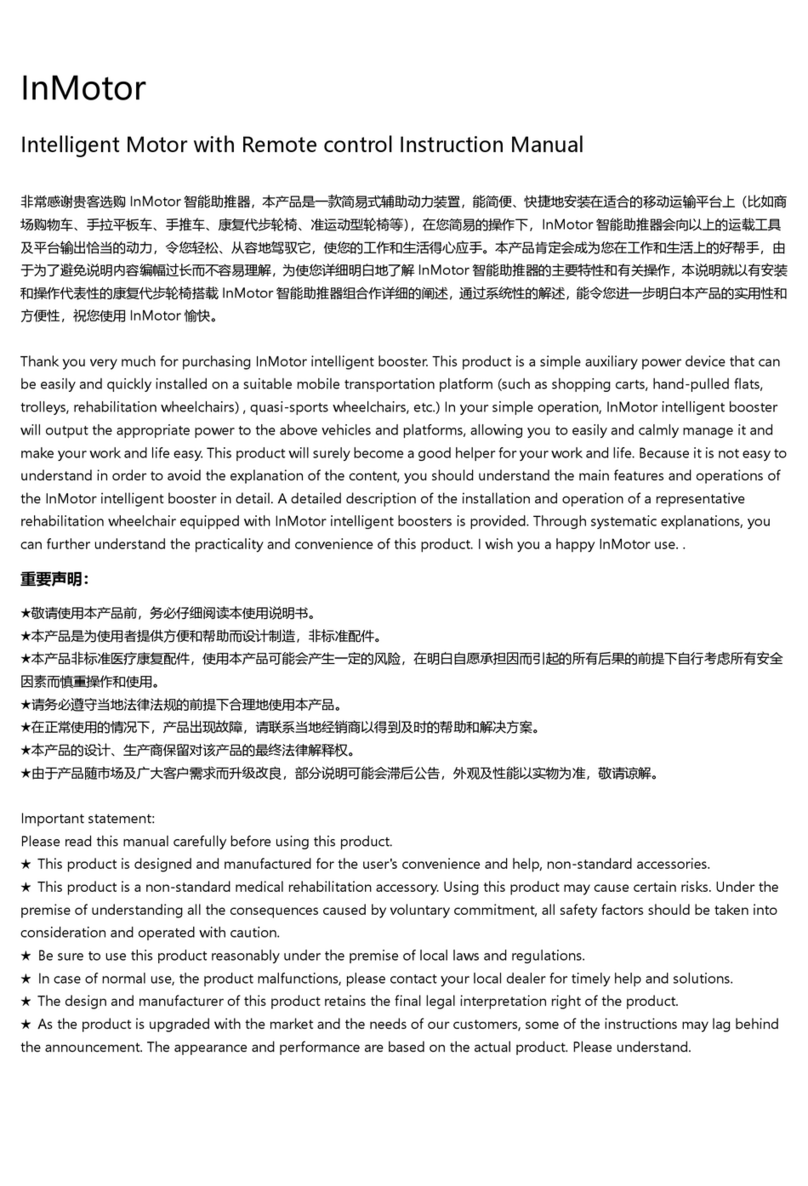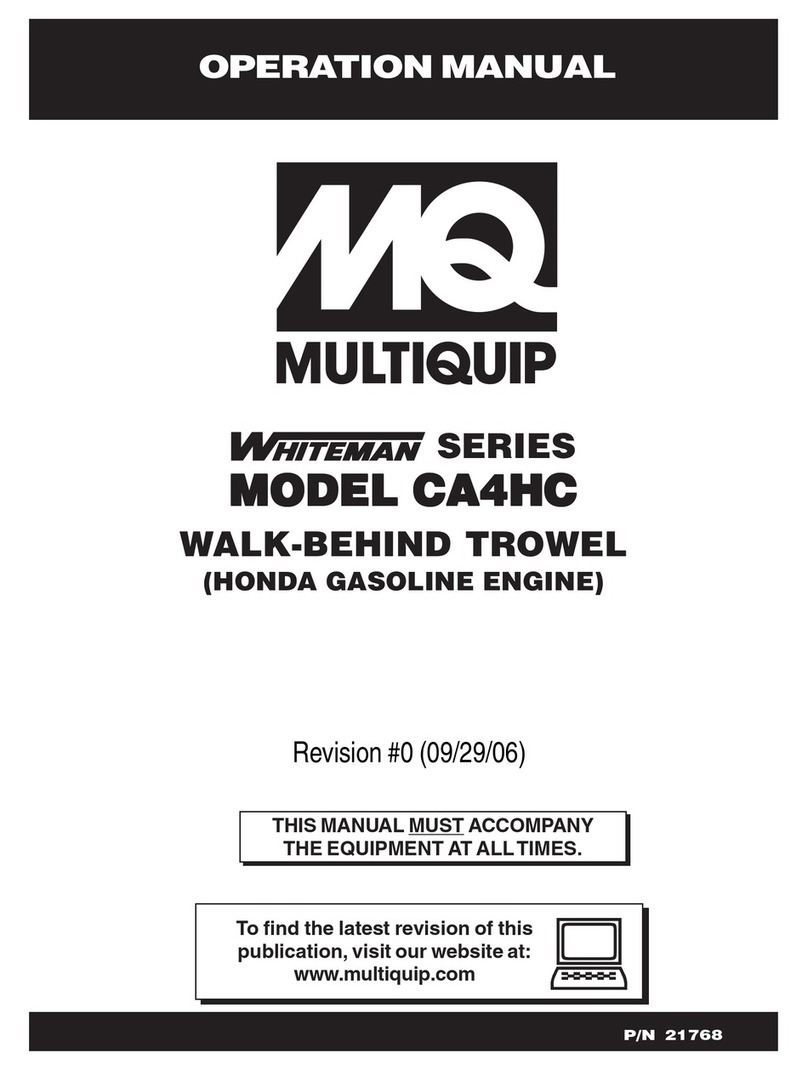Stark KBQ301A Installation and operation manual

STAINLESS STEEL
Gegründet in der Schweiz Founded in Switzerland
STARK Stainless Steel Motors
Foodsafe quality drives
OPERATING & MAINTENANCE INSTRUCTIONS
EBS ECONOMY SERIES IEC
EBS ECONOMY SERIES IEC

Contents
ECONOMY SERIES IEC
General info & caracteristics 4
Important notes 4
Safety notes 5
Motor & type designation 5
Motor nameplate 6
Conguration type 6
Packaging, transport, delivery, storage and preparation 7
Mechanical installation 7
Electrical installation 9
Anti-condensation heater 11
Temperatute monitoring elements (PTCs) 11
Frequency inverters 12
Maintenance 12
Motor drawing & parts 13
STAINLESS STEEL
2

High Quality
High quality in production, sales, service
and maintenance
EU-engineered
Large EU stock with short delivery times via
European distribution network
Data & Support
Accurate data, R&D, testing and native support
within one working day
Price & Quality
Very favorable price-to-quality ratio for all
STARK Stainless Steel motors
Foodsafe Quality Drives 3
Fast Delivery
Safe Packaging
International Distribution

STAINLESS STEEL
4
EBS Economy Series IEC
Operating & Maintenance instructions
Stainless Steel Motors
STAINLESS STEEL
Certication: CE, UL, CSA, EAC, CCC
Power/output: 0.18 – 3kW
IE class: IE3 ≥0,75W
IEC size: 63 – 132
Protection Class: IP69K
Rating: S1 (continuous)
Ambient temp: -15°C ~ +40°C
Voltage/Frequency: 230/400V±10%/50Hz, 265/460V±10%/60Hz
Cooling: TENV(<0.75kW), TEFC (0.75kW – 3kW)
Frequency Inverter (VFD): 15 – 75Hz (5 – 50Hz constant torque)
Cable gland protection: IP68* (*IP69K cable gland on request)
Condensation Control: anti condensation heater (230V)
Material: AISI 304
Seals: VITON/FPM
Mounting: B14A, B14B, B5, B3
Poles: 2-Pole, 4-Pole, 6-Pole
Insulation class: F
Max. altitude: 1.000 meters
Motor protection: PTC
IMPORTANT NOTES
Always follow the safety and warning instructions in this manual.
A requirement of fault-free operation and fullment of any rights to claim under guarantee is that you adhere to the information
in the operating instructions. Consequently, read the operating instructions before you start operating the motor. Keep the oper-
ating instructions in the vicinity of the motor since they contain important information about servicing the motor.
The manufacturer disclaims all liability for consequential damages resulting from any changes or modications made to their mo-
tors by third parties. Independent devices, such as encoders and brakes, which are attached to or placed in the motors have their
own instructions for use that must be followed during installation and commissioning.
Electrical Hazard
Possible consequences: Severe or fatal injuries
Hazard
Possible consequences: Severe or fatal injuries
Hazardous situation
Possible consequences: Slight or minor injuries
Harmful situation
Possible consequences: Damage to the drive and the environment
Tips
Tips and useful information

Foodsafe Quality Drives 5
STAINLESS STEEL
Operating & Maintenance instructions
Stainless Steel Motors
SAFETY NOTES
The following safety notes apply to the usage of stainless-steel motors.
When using geared motors please refer also to the safety notes for gearboxes in the corresponding manual.
• Corresponding detailed operating manual(s) and wiring diagrams
• Warning labels on the motor or drive
• System-specic regulations and requirements
• Relevant national/regional regulations for safety and accident prevention
All transport, storage, tting, connection, installation, as well as repair and maintenance works may only be
performed by qualied personnel. The installations must be installed in accordance with the locally applicable
standards. The following point must be given consideration in particular:
• Inappropriate usage
• Faulty installation or handling
• Impermissible removal of necessary protective covering or housing
• In particular cases the motors show surface temperatures of up to 110°C depending on design, operation
and cooling. In these cases, a touch protection must be placed on the surface of the motor.
Severe damage to persons and property can be caused by:
Designated use
These motors are intended for use in industrial installations; they correspond to the relevant standards and regulations
and meet the requirements of the low voltage directive 2014/35/EU. The technical data and information about the relevant
regulations are to be found on the nameplate and in the documentation. All instructions must be strictly observed at all times.
MOTOR AND TYPE DESIGNATION
EBS 71 L 4
Product
Code
Frame
Size
No. of
Poles
Frame
Length

STAINLESS STEEL
6
MOTOR NAMEPLATE
The STARK stainless-steel motors are labelled with a laser-applied type designation. The nameplate is attached to the housing
such that it can’t be removed. This is done for hygienic reasons as it eliminates the possibility for contaminant accumulation and
bacteria growth behind the nameplate.
CONFIGURATION TYPE
The way of mounting and the position of the electric motor is also referred to as the construction form. The most common, stan-
dardized construction forms are summarized in the table below.
When choosing (ordering) the electric motor, the specied construction form must always be in accordance with the
set-up (in connection with the protection class and bearing construction). If it concerns a ange motor, it is necessary
to specify the desired type of mounting holes FF or FT with the corresponding M size (pitch circle mounting holes).
FF (Flange Free Holes) = through holes according to B5 anges
FT (Flange Tapped Holes) = tapped holes according to B14 anges.
With feet
With FF ange
With FT large ange
With FT small ange
With feet and FF ange
With feet and FF large ange
With feet and FF small ange
The conguration types of the motors can be as follows:
B3, B6, B7, B8, V5, V6
B5, V1, V3
B14B (large B14 ange), V18, V19
B14A (small B14 ange), V18, V19
B3/B5, V1/V5, V3/V6
B3/B14B, V5/V18, V6/V18
B3/B14A, V5/V18, V6/V18

Foodsafe Quality Drives 7
PACKAGING, TRANSPORT, DELIVERY, STORAGE AND PREPARATION
Packaging
All motors are shipped in sturdy packaging. Depending on weight, a suitable box is chosen, which may be placed on a pallet. The
package is labelled with the necessary stickers.
Delivery
Please check all shipments immediately upon receipt for possible damages in transport. Before unpacking, check to ensure that
the package is not damaged. Also check the motor for shipping damage. Announce these without delay to the forwarding agent
and the supplier. The motors may not be used until further notice.
Transport
Avoid any tilt or upside-down transportation. If the motors are to be forwarded to the end-customer, it is recommended to use
the original packaging. After acceptance of the goods at your location, the supplier can’t be held liable for any damages resulting
from inadequate packaging.
Storage
Avoid any tilt or upside-down storage. Do not stack too high to avoid damaging the packages underneath.
1. To minimise degradation of the insulation resistance the environment must be dry and dust-free.
2. The ambient temperature must be between -20°C and +40°C, with a relative humidity of less than 70% and a maximum
daily temperature uctuation of ±10°C.
3. To prevent damage during storage, eective vibration (Ve) must not exceed 0,2 mm/s.
Preparation
After unpacking, remove dust from the motor surface and rust-preventive coating from shaft extension end. Please remove ex-
isting transport securities before use. Check, whether the data on the nameplate is correct. The fasteners should all be xed. The
rotor should not rub against the stator when it is turned by hand. Check winding insulation resistance with 500V Ohmmeter, the
measured value should not be lower than 1MΩ, otherwise the stator winding must be dried with temperature lower than 120°C.
MECHANICAL INSTALLATION
Before installation
Live or rotating parts of electrical machines can cause serious injury or death
• Bring your installation to a complete standstill
• Completely de-energise the installation
• Take measures to protect against unintended reconnection
• Verify the absence of voltage
• Adjacent current-carrying parts must be shielded
• Follow the instructions in the installation manual
• The electrical installation must be carried out in accordance with the locally applicable regulations (e.g. correct
cable diameters, cable glands, fuses, earthing cable, connection).
The motor may not be opened without the manufacturer’s permission.
Doing so will void the warranty. This doesn’t apply to the opening of the terminal box.

MECHANICAL INSTALLATION
During installation
Please follow the safety instructions when installing.
1. The motor may only be installed when the information on the nameplate corresponds with the mains voltage
respectively the output voltage of the frequency inverter. The motor is not damaged (no damage by transport or
storage).
2. The motor must only be installed in stated version on a at, shock free and torsion tight surface.
3. The key mounted in the secondary output shaft must be secured before the electric motor is mounted,
connected and started.
4. Align motor and working machine thoroughly, so that the output shafts will not be loaded inadmissibly (please
note allowable radial and axial forces).
5. Make sure no shock or eccentricity occurs on shaft ends.
6. Balance parts which are drawn on shaft later with half key (motor shafts are balanced with half key).
7. Use the correct diameter mounting bolts, which must be carefully tightened and secured to prevent loosening
during operation as a result of vibration and to avoid damage to the motor.
8. If the motor is installed vertically, measures must be taken to prevent small particles from falling through the fan
cap, either by the way the installation is constructed or by installation of a canopy. This must not impede the ow
of cooling air through the motor.
9. Pulleys or couplings may only be secured in place by means of the tapped hole in the face side of the shaft. If
hammer blows are used to install pulleys or couplings on the shaft, the bearings may be irreparably damaged.
Mount only carefully, dynamically balanced pulleys or couplings on the shaft end. Machines that are connected
to the motor by a coupling must be aligned in accordance with the instructions provided by the coupling
manufacturer.
Installation in humid environments
1. Terminal box should possibly be xed so that the cable entries are positioned downwards.
2. Seal cable entries correctly.
3. Clean sealing surfaces of terminal box and terminal box cover well before reassembly.
4. Do not use damaged seals for cable connections and blind plugs. Replace embrittled seals.
5. STARK stainless-steel motors are suitable for use in extreme (washdown) environments such as those found in
the food and pharmaceutical industries. STARK stainless-steel motors are not intended and are not intrinsically
suitable for underwater use. Installation in open air, in direct sunlight will need to be carefully considered to avoid
overheating.
6. Existing condensation drain holes are sealed and may only be opened when necessary. The condensation drain
holes must generally be kept sealed in order to maintain the specied IP protection class. In order to counteract
the eects of suction (condensation formation), each motor can be tted with a stainless-steel breather valve.
This valve is mounted on the B-bearing shield and ensures that pressure inside the motor is equal to the pressure
outside the motor housing. This minimises the likelihood of condensate formation. The valve is tted on request
and is only necessary in specic applications. Please consult STARK for the use of the stainless-steel breather
valve.
STAINLESS STEEL
8

Foodsafe Quality Drives 9
ELECTRICAL INSTALLATION
Please follow the safety instructions when installing.
1. Connect motors only according to the wiring diagram which is attached to the motor.
2. Do not connect or start up the motor if the wiring diagram is missing.
3. The electric motor must be earthed in accordance with local regulations.
4. The motor voltage and frequency must correspond to the local line voltage and machine load.
5. Perform connection of the motor, control circuit, overload protection and earthing in accordance with the local installation
guidelines.
6. Do not use motor protection devices that automatically reset.
7. Unexpectedly starting the motor can cause serious injury or death.
General notes
1. Route separately shielded feeder cables together with switched-mode power lines in one cable.
2. Do not route unshielded feeder cables together with switched-mode power lines in one cable.
Wiring notes
1. Connect the electric motors with the appropriate cable and clamps. Special designs of motors may show surface temperature
of up to 110°C depending on design, operation and cooling. In these cases, the operator has to t connection cables apt for
above mentioned temperature range.
2. Unused openings must be sealed with the supplied stainless-steel plugs and matching O-rings.
3. Applied wire clamps, connecting sleeves and cable glands must be suitable for the applied cable diameters.
4. Follow the recommendations in the instructions of use provided by the manufacturer of the cable and the cable glands.
Connection cable
Connect motor
• Please adhere to the valid wiring diagram without fail.
• When missing, the motor must not be connected or started. Qualied personnel is essential.
• Check cable cross section, as to rated power of motor, valid installations instructions and requirements on site.
There are six terminals on the terminal board, the identication are as follows:
Electrical connection
Phase sequence
Head of phase winding
Tail of phase winding
A
U1
U2
B
V1
V2
C
W1
W2
Delta connection (Δ) Star connection (Y)
U1, V1, W1, U2, V2, W2 are the motor leads
A, B and C are the supply cables
According to the nameplate, the connection of stator winding
should be delta or star. When phase sequence A.B.C. of the
power supply is accord with winding sequence U1.V1.W1, motor
rotate direction is C.W. as viewed from the shaft extension end.
With any of these two phases of the power line changed, the
motor rotates in the opposition direction.

STAINLESS STEEL
10
ELECTRICAL INSTALLATION
Remove terminal box cover. Make sure that the
O-ring seal and threads will not be damaged.
1
Setup motor cables in star or delta connection
according to nameplate. The black/blue marked
wires are for the PTCs. The red marked wires are
for the anti-condensation heater 230V.
2
Carefully remove the insulation from the earthing
cable and get an eye-type cable lug suitable for the
cable used, with the corresponding diameter.
3
Strip back all supply cables to a sucient length.
Attach shrink sleeve to cover completed connection
thoroughly.
4
Route the cable through a suitable stainless
steel cable gland into the terminal box. Check
that the cable gland diameter matches the cable
diameter you are using. Ensure that the assembly
and connection are performed so as to maintain the
protection class. If the second cable entry will not be
used, it must be thoroughly sealed with the supplied
stainless steel blind nut and a O-ring.
5Connect the power cable leads to the motor
terminal block in accordance with the wiring
diagram.
6
Connect the built in PTC’s and anticondensation
heater with suitable crimp connections.
7
Connect the earth wire to the earth connection
in the motor. Crimp the cable eye to the earthing
cable.
8Lightly grease the O-ring and close the terminal box
with the terminal box cover. Prevent damage to the
O-ring and make sure the cover is closed rmly.
9

Foodsafe Quality Drives 11
ANTI-CONDENSATION HEATER
Humidity which occurs at the windings of the motors operating especially at humid environments reduces the insulation resis-
tance and leads to shortened motor operation life and burned windings. In such applications, humidity on the windings should
be kept away from the motor by means of anticondensation heaters which are placed into the motor winding. The connection
data for the anticondensation heater are listed on the nameplate. One of two dierent heating systems may be used:
• Heat supplied by heating elements connected to separate terminals
• Heat supplied by a winding by applying an AC voltage to terminals U1-V1
The electrical circuit must be connected so as to ensure that the motor and the anti-condensation heater are never powered at
the same time:
• Motor on = anticondensation heater o
• Motor o = anticondensation heater on
Specications:
Model
KBQ301A
KBQ302A
KBQ303A
KBQ304A
Dimensions (l*w*thickness)
220x12x2,5x4,5 mm
260x14x2,5x4,5 mm
350x14x2,5x4,5 mm
460x14x2,5x4,5 mm
Length outgoing line
160 mm
340 mm
440 mm
740 mm
Power
10W
20W
30W
40W
Rated Voltage
220V
220V
220V
220V
Rating Motor
H63
H71~H90
H100~H112
H132~H160
TEMPERATURE MONITORING ELEMENTS (PTC)
The PTC thermistors for protecting the motor windings meet the global requirements with a switching value of TC = 155°C
PTC thermistors may only be operated by corresponding switching units. A connection voltage more
than 2,5V can lead to destruction of the PTC thermistors and damage to the motor windings.
Type
Max. working voltage
Normal using voltage
-20°C ~ Tk --20°C
Control temperature characteristics
Normal atmospheric temp. insulation
Voltage resistance
MZ6-155-DS
30V
≤2,5V
R≤750Ω
Tk-5°C R≤1650 Ω
Tk+5°C R≥3990 Ω
Tk+15°C R≥12.000 Ω
≥100MΩ
2500VAC/1min
The built-in PTC’s are installed to monitor the maximum motor temperature and are not intended to measure the exact motor
temperature. If you want to measure the exact motor temperature, the installation of PT100 or PT1000 elements is necessary.

STAINLESS STEEL
12
USE OF FREQUENCY INVERTERS
All STARK stainless-steel motors are suitable for use with frequency inverters between 5 and 75Hz. For operation with frequency
inverters, we recommend that the motors are protected with PTC sensors. The PTC thermal protectors (155°C) are installed by
STARK as standard and are only suitable for use in control circuits and must never be connected in series with the motor.
Cable lengths more than approx. 30 meters must be avoided to prevent damage caused by harmonic
peaks to the motor or frequency inverter. Consult the instructions for use of the frequency inverter
used or consult your installer about the use of lters.
Basic rules when using frequency converters and STARK stainless
steel electric motors:
• Above 50/60Hz the torque will decrease (see graph below)
• For uncooled motors (TENV), the set frequency should be
between 20 and 75Hz
• Always consult STARK or your supplier when TENV motors
are used with a frequency lower than 20Hz.
• For cooled motors (TEFC), the set frequency should be
between 40Hz and 75Hz. The main reason for this is that the
fan must have sucient speed to cool the motor.
Voltage
Power
Torque
Frequency / Speed
Torque
Torque
Voltage & Power
MAINTENANCE
General requirements
1. Motor should be installed where atmosphere is relatively clean, dry and well ventilated
2. If the overheat protecting device or short circuit protecting device comes to function continually, judgement must be made
to determine whether the motor is overloaded, or the protecting value is set too low. Only after the trouble is eliminated, the
motor is allowed to resume operation.
3. The STARK stainless steel electric motors are equipped with NSK double-sided sealed deep groove ball bearings. The ball
bearings are lubricated with high-temperature (-40°C / +160°C) long-life grease (ENS Grease). Under normal operating
conditions the lubricant is adequate for 40.000 hours of operation for 4- and 6-pole motors and 20.000 hours for 2-pole
motors.
STARK Stainless steel motors are tted with ball bearings according to the table below.
4. Correct lubrication must be maintained during operation. Normally, bearing grease should be replace or replenish every
2000 hours of operation (For totally enclosed bearings, no lube change is necessary during their life span). Bearing grease
should be replaced when its lubricant deteriorates or when excessive heat of the bearings occurs. Before fresh grease is used,
bearing and oil slot of bearing cover should be removed the dirty grease and cleaned with gasoline, then lled with lubricant,
grease up to half volume (for 2 poles motors) or 2/3 volume (for 4, 6 and 8-pole motors) of the bearing inner space.
5. When the bearing is worn out, the motor vibration and noise will go up noticeably. Inspect bearing radial play, replace the
• Check the motors regularly, regardless of the operating conditions
• Keep the motors clean; this also applies to ventilation openings, if applicable
• Regularly check the shaft seals for damage, and replace if necessary
• Regularly check that the breather valve on the motor is working properly
• Check and retorque the mounting bolts. Make sure that the motors are rmly and correctly attached to the installation
Motor frame size
Od*bore*width (mm)
NSK Type
IEC 63
35*15*11
6202ZZC3
IEC 71
40*17*12
6203ZZC3
IEC 80
47*20*14
6204ZZC3
IEC 90
52*25*15
6205ZZC3
IEC 100
72*30*19
6306ZZC3
IEC 112
72*30*19
6306ZZC3
IEC 132 front
80*40*18
6208ZZC3
IEC 132 back
90*40*23
6308ZZC3
Bearing I.D. (mm)
Max. backlash allowed (mm)
10 - 20
0.05
20 - 30
0.10
35 - 50
0.15
55 - 80
0.20

Foodsafe Quality Drives 13
MAINTENANCE
6. The fast-running secondary shaft is tted with a special food-grade brown VITON oil seal to prevent ingress of moisture and
dirt. We recommend always replacing these parts during maintenance.
7. If a fan cap is present (TEFC series), the intake and exhaust openings may not be obstructed, and the airow may not be
restricted. Reduced cooling can drastically reduce the service life of the windings. In addition, regular inspection and cleaning
of the intake and exhaust openings of the fan cap is recommended. To allow optimum cooling, a minimum distance of 25% of
the diameter of the air intake opening in the fan cap must be maintained between the air intake opening in the fan cap and
the machine frame.
8. Dismantling and maintenance of the motor should only be carried out by authorized personnel. When disassembling the
motor, take out of the rotor from the shaft extension end, and when taking the rotor from the stator, prevent damage to the
stator winding or insulation.
9. To dissemble the motor, all four cap nuts on the rear shield must be loosened several turns. Several gentle taps on the cap
nuts with a plastic hammer will push the front shield out of the motor housing. Once the O-ring is free of the motor housing,
the shield can be pulled out of the motor together with the rotor.
10. When replacing motor winding, correct data of winding turns, wire gauges, coil types must be recorded. In case these data
are not available of costs, consult, deviation from design data will cause poor performance or completely unworkable.
11. Any inspection must be carried out using correct tools.
It is absolutely prohibited to open the electric motor by placing a screwdriver or other sharp
tool between the shield and the housing to pry them apart. Doing so will permanently
damage the mating edges, making it impossible to obtain a good seal upon reassembly.
MOTOR DRAWING & PARTS
1. Gland
2. O-ring
3. Cable screw plug
4. Terminal box lid
5. O-ring
6. Terminal box
7. Flange
8. O-ring
9. Oil seal
10. Bearing
11. Hole circlip
12. Rotor
13. Housing
14. Feet
15. Winding stator
16. Wave circle
17. Fan cover setting screw
18. End shield
19. Bolt screw
20. O-ring
21. Washer
22. Cap nut
23. Fan
24. Circlips
25. Fan cover screw
26. Fan cover
This manual suits for next models
3
Table of contents
Popular Engine manuals by other brands
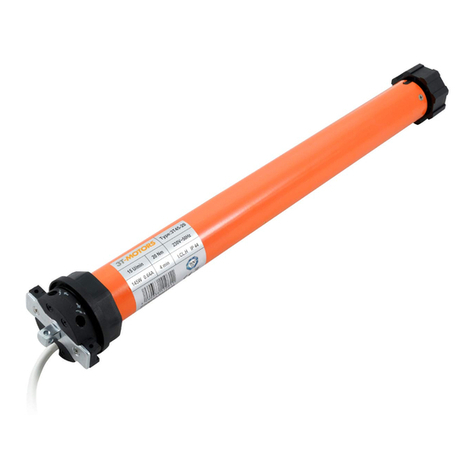
3T-Components
3T-Components 3T-MOTORS 3T45-20 Installation & operating instructions
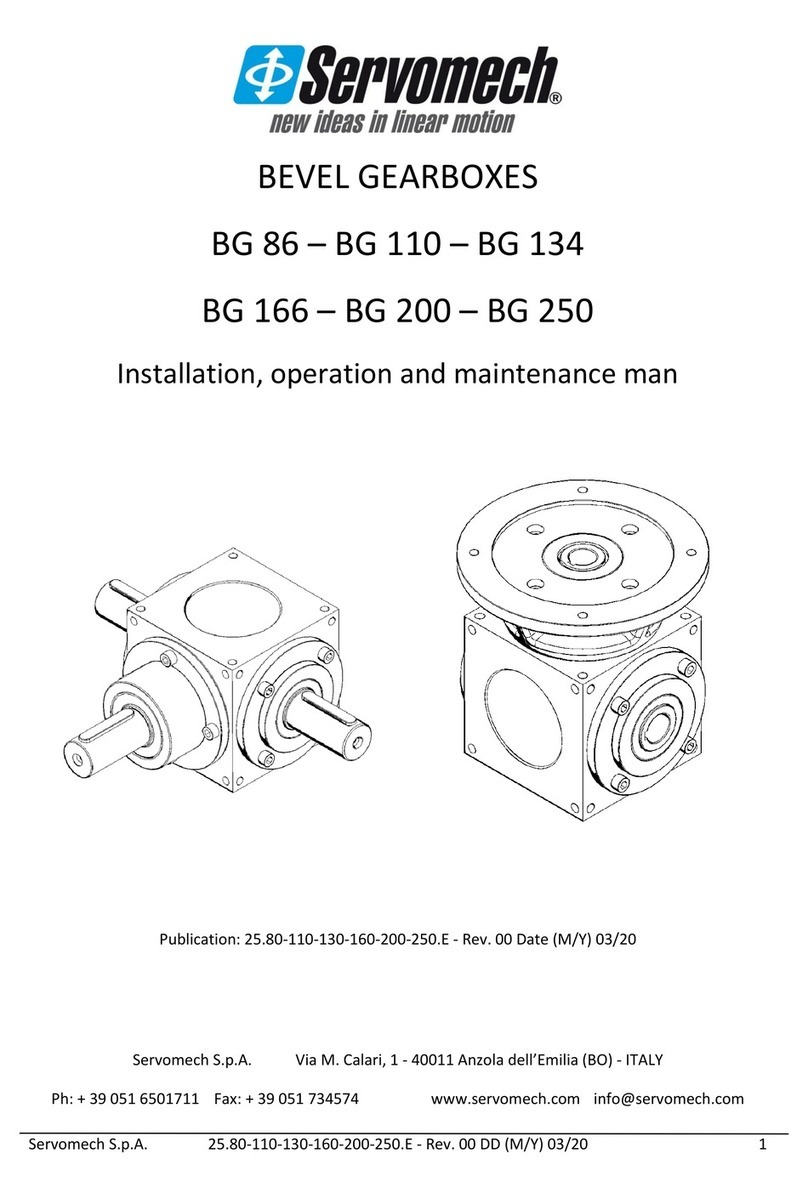
Servomech
Servomech BG 86 Installation, operation and maintenance manual
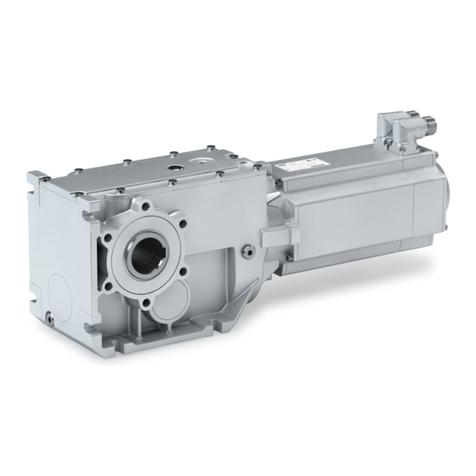
Lenze
Lenze g500-B Project Planning
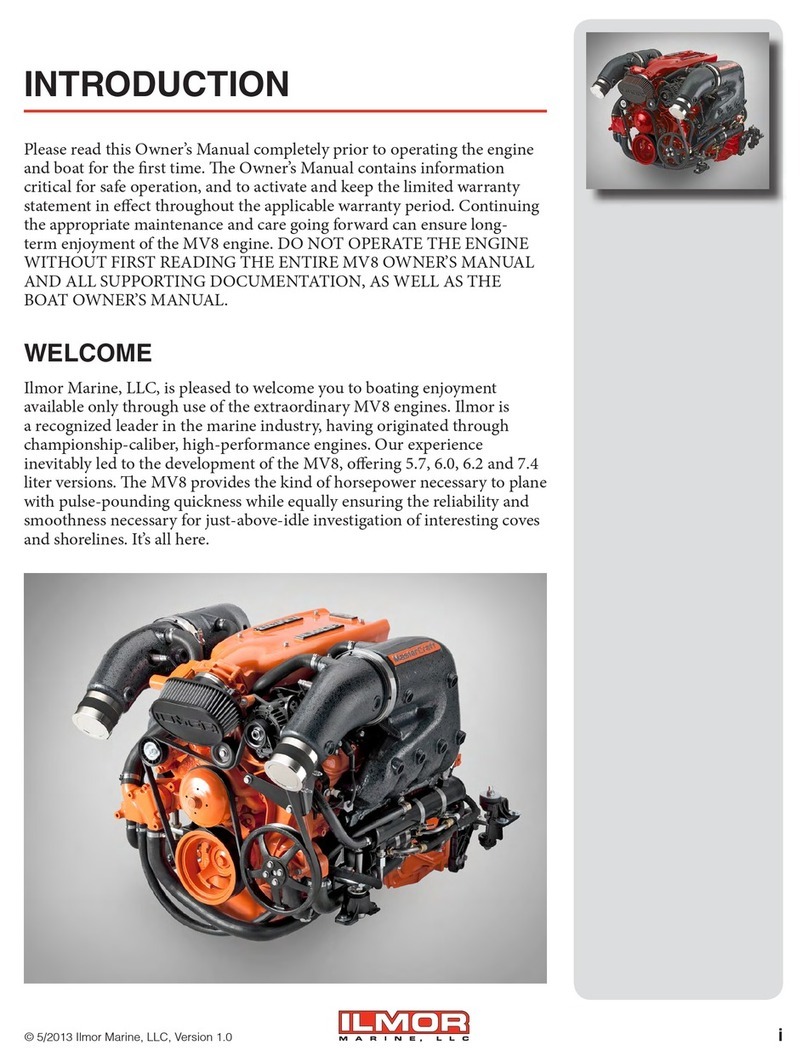
ILMOR
ILMOR MV8 owner's manual
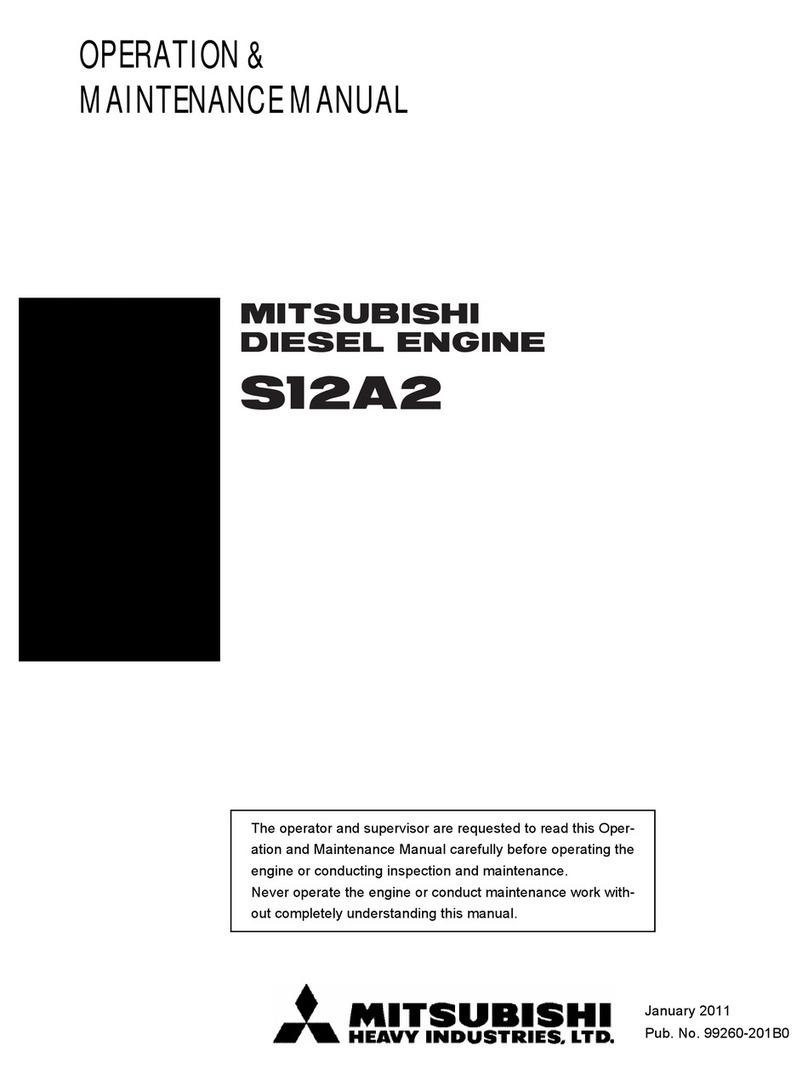
Mitsubishi Heavy Industries
Mitsubishi Heavy Industries SA Operation & maintenance manual

Villager
Villager VGR 250 H Original instruction manual

Briggs & Stratton
Briggs & Stratton 60700 Series Operating and maintenance instructions
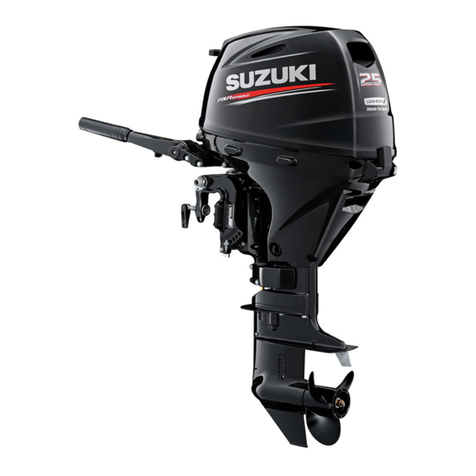
Suzuki
Suzuki DF 25 owner's manual

Hyundai Seasall
Hyundai Seasall S250S Installation & operation manual
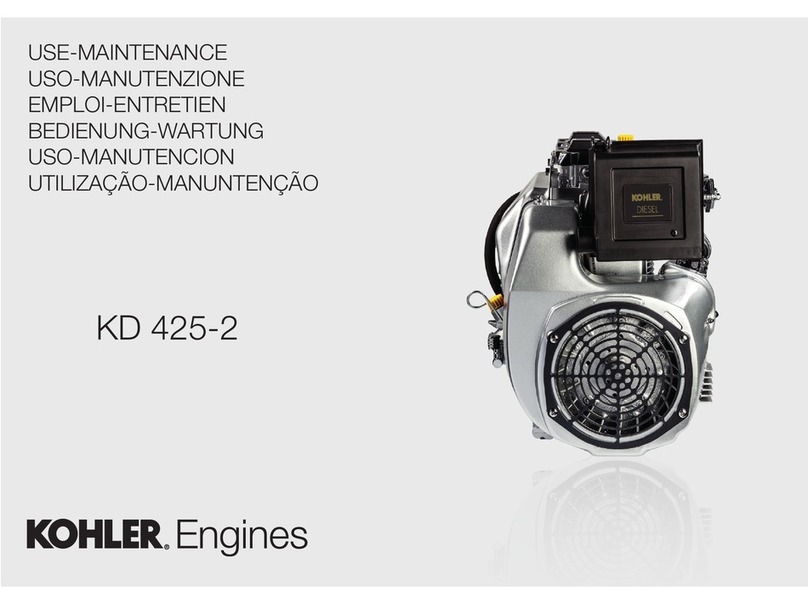
Kohler
Kohler KD425-2 Use and maintenance manual
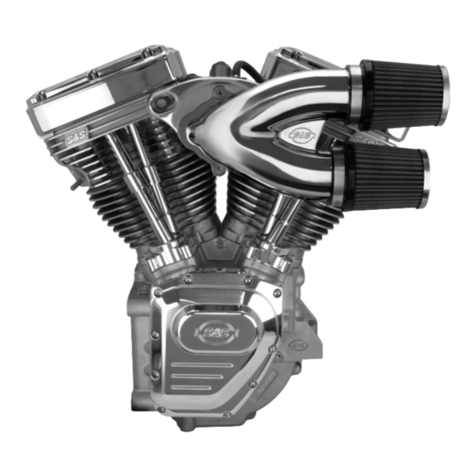
S&S Cycle
S&S Cycle T111 installation instructions

Man
Man E 2942 LE 302 Repair manual


